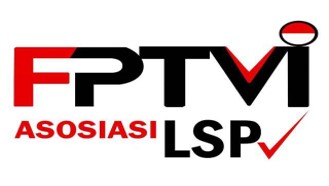Reliability improvement of railway vehicles: a review
Abstract
Keywords
Full Text:
PDFReferences
G. A. Giannopoulos, “The application of information and communication technologies in transport,”
Eur. J. Oper. Res., vol. 152, no. 2, pp. 302–320, 2004, doi: 10.1016/S0377-2217(03)00026-2.
M. Vojtek, M. Kendra, and S. Stoilova, “Optimization of railway vehicles circulation in passenger
transport,” Transp. Res. Procedia, vol. 40, pp. 586–593, 2019, doi: 10.1016/j.trpro.2019.07.084.
M. Leite, M. A. Costa, T. Alves, V. Infante, and A. R. Andrade, “Reliability and availability
assessment of railway locomotive bogies under correlated failures,” Eng. Fail. Anal., vol. 135, no.
January, 2022, doi: 10.1016/j.engfailanal.2022.106104.
F. Appoh, A. Yunusa-Kaltungo, J. K. Sinha, and M. Kidd, “Practical Demonstration of a Hybrid
Model for Optimising the Reliability, Risk, and Maintenance of Rolling Stock Subsystem,” Urban
Rail Transit, vol. 7, no. 2, pp. 139–157, 2021, doi: 10.1007/s40864-021-00148-5.
P. Umiliacchi, D. Lane, and F. Romano, “Predictive maintenance of railway subsystems using an
Ontology based modelling approach,” Proc. 9th world Conf. Railw. Res., pp. 22–26, 2011.
R. F. Stapelberg, Handbook of Reliability, Availability, Maintainability and Safety in Engineering
Design, 1st ed. London: Springer London, 2009. doi: https://doi.org/10.1007/978-1-84800-175-6.
M. Szkoda and G. Kaczor, “Application of FMEA Analysis to Assess the Safety of Rail Vehicles,”
rd Int. Symp., no. June, pp. 1–9, 2015.
A. I. Bazanov, A. V., Sapozhenkov, N. O., Alykov, R. B., & Kozhederov, “Optimization of the
Rolling Stock Service Life at Transport Enterprises,” Archit. Constr. Transp., 2021, doi:
https://doi.org/10.31660/2782-232X-2021-3-68-79.
H. C. Liu, L. Liu, and N. Liu, “Risk evaluation approaches in failure mode and effects analysis: A
literature review,” Expert Syst. Appl., vol. 40, no. 2, pp. 828–838, 2013, doi:
1016/j.eswa.2012.08.010.
M. Mayisela and D. G. Dorrell, “Application of Reliability-Centred Maintenance for DC Traction
Motors - A Review,” in Proceedings - 2019 Southern African Universities Power Engineering
Conference/Robotics and Mechatronics/Pattern Recognition Association of South Africa,
SAUPEC/RobMech/PRASA 2019, May 2019, pp. 450–455. doi: 10.1109/RoboMech.2019.8704755.
S. M. Rezvanizaniani, J. Barabady, M. Valibeigloo, M. Asghari, and U. Kumar, “Reliability analysis
of the rolling stock industry: A case study,” Int. J. Performability Eng., vol. 5, no. 2, pp. 167–175,
I. Ansori, Warjito, Lukman Shalahuddin, and Sahid Bismantoko, “Reliability Analysis on the Bogie
System at Indonesian High-Speed Trains in the Design Phase to Improve Service Quality,” Maj. Ilm.
Pengkaj. Ind., vol. 15, no. 3, 2021, doi: 10.29122/mipi.v15i3.5010.
X. Cheng, Z. Xing, Y. Qin, Y. Zhang, S. Pang, and Jun Xia, “Reliability Analysis of Metro Door
System Based on FMECA,” J. Intell. Learn. Syst. Appl., vol. 53, no. 5, pp. 216–220, 2013, doi:
http://dx.doi.org/10.4236/jilsa.2013.54024.
J. Kim and H. Y. Jeong, “Evaluation of the adequacy of maintenance tasks using the failure
consequences of railroad vehicles,” Reliab. Eng. Syst. Saf., vol. 117, pp. 30–39, 2013, doi:
1016/j.ress.2013.03.008.
M. Ten Wolde and A. A. Ghobbar, “Optimizing inspection intervals - Reliability and availability in
terms of a cost model: A case study on railway carriers,” Reliab. Eng. Syst. Saf., vol. 114, no. 1, pp.
–147, 2013, doi: 10.1016/j.ress.2012.12.013.
L. Ciani, G. Guidi, G. Patrizi, and D. Galar, “Condition-based maintenance of hvac on a high-speed
train for fault detection,” Electron., vol. 10, no. 12, 2021, doi: 10.3390/electronics10121418.
Y. N. Xu, Q. Qiao, R. F. Wu, and Z. P. Zhou, “Advanced maintenance cycle optimization of urban
rail transit vehicles,” Adv. Mech. Eng., vol. 11, no. 2, pp. 1–7, 2019, doi:
1177/1687814019827113.
Q. Gong, L. Yang, Y. Li, and B. Xue, “Dynamic Preventive Maintenance Optimization of Subway
Vehicle Traction System Considering Stages,” Appl. Sci., vol. 12, no. 17, 2022, doi:
3390/app12178617.
Y. H. Cheng and H. L. Tsao, “Rolling stock maintenance strategy selection, spares parts’ estimation,
and replacements’ interval calculation,” Int. J. Prod. Econ., vol. 128, no. 1, pp. 404–412, 2010, doi:
1016/j.ijpe.2010.07.038.
P. D. . Conradie, C. J. Fourie, P. J. Vlok, and N. F. Treurnicht, “Quantifying System Reliability in
Rail Transportation in an Ageing Fleet Environment,” South African J. Ind. Eng., vol. 26(2), pp.
–142, 2015, doi: http://dx.doi.org/10.7166/26-2-1076.
M. Szkoda, G. Kaczor, R. Pilch, M. Smolnik, and Z. Konieczek, “Assessment of the influence of
preventive maintenance on the reliability and availability indexes of diesel locomotives,” Transp.
IPTEK Jurnal Nasional AMORI, Vol. xx(x), Xxx. 20xx. 2088-2033 (e-ISSN : 2721-3560 p-ISSN : 2655-2337) 12 Probl., vol. 16, no. 1, pp. 5–18, 2021, doi: 10.21307/tp-2021-001.
M. Szkoda and M. Satora, “The application of failure mode and effects analysis (FMEA) for the risk
assessment of changes in the maintenance system of railway vehicles,” Czas. Tech., no. 8, pp. 159–
, 2019, doi: 10.4467/2353737xct.19.086.10865.
F. Corman, S. Kraijema, M. Godjevac, and G. Lodewijks, “Optimizing preventive maintenance
policy: A data-driven application for a light rail braking system,” Proc. Inst. Mech. Eng. Part O J.
Risk Reliab., vol. 231, no. 5, pp. 534–545, 2017, doi: 10.1177/1748006X17712662.
J. Grenčík, R. Poprocký, J. Galliková, and P. Volna, “Use of risk assessment methods in
maintenance for more reliable rolling stock operation,” MATEC Web Conf., vol. 157, pp. 1–11,
, doi: 10.1051/matecconf/201815704002.
J. Lin, J. Pulido, and M. Asplund, “Reliability analysis for preventive maintenance based on
classical and Bayesian semi-parametric degradation approaches using locomotive wheel-sets as a
case study,” Reliab. Eng. Syst. Saf., vol. 134, pp. 143–156, 2015, doi: 10.1016/j.ress.2014.10.011.
J. Lin, M. Asplunda, and A. Paridaa, “Reliability analysis for degradation of locomotive wheels
using parametric bayesian approach,” Qual. Reliab. Eng. Int., vol. 30, no. 5, pp. 657–667, 2014, doi:
1002/qre.1518.
D. Eisenberger and O. Fink, “Assessment of maintenance strategies for railway vehicles using Petri nets,” Transp. Res. Procedia, vol. 27, pp. 205–214, 2017, doi: 10.1016/j.trpro.2017.12.012.
J. Lin, M. Asplund, and A. Parida, “Bayesian parametric analysis for reliability study of locomotive
wheels,” Proc. - Annu. Reliab. Maintainab. Symp., pp. 1–6, 2013, doi:
1109/RAMS.2013.6517760.
Y. H. Li, Y. D. Wang, and W. Z. Zhao, “Bogie failure mode analysis for railway freight car based
on FMECA,” Proc. 2009 8th Int. Conf. Reliab. Maintainab. Safety, ICRMS 2009, pp. 5–8, 2009, doi:
1109/ICRMS.2009.5270253.
E. Ruijters, D. Guck, P. Drolenga, and M. Stoelinga, “Fault maintenance trees: Reliability centered
maintenance via statistical model checking,” Proc. - Annu. Reliab. Maintainab. Symp., vol. 2016-
April, pp. 2–7, 2016, doi: 10.1109/RAMS.2016.7447986.
E. Ruijters, D. Guck, P. Drolenga, M. Peters, and M. Stoelinga, “Maintenance analysis and
optimization via statistical model checking: Evaluating a train pneumatic compressor,” Lect. Notes
Comput. Sci. (including Subser. Lect. Notes Artif. Intell. Lect. Notes Bioinformatics), vol. 9826
LNCS, pp. 331–347, 2016, doi: 10.1007/978-3-319-43425-4_22.
H. Lee, E. Joung, G. Kim, and C. Lee, “A study on management system for reliability analysis in
advanced EMU,” 2012 IEEE Veh. Power Propuls. Conf. VPPC 2012, pp. 1266–1269, 2012, doi:
1109/VPPC.2012.6422708.
M. Babeł and M. Szkoda, “Diesel locomotive efficiency and reliability improvement as a result of
power unit load control system modernisation,” Eksploat. i Niezawodn., vol. 18, no. 1, pp. 38–49,
, doi: 10.17531/ein.2016.1.6.
R. Melnik, S. Koziak, B. Sowiński, and A. Chudzikiewicz, “Reliability analysis of metro vehicles
operating in Poland,” Transp. Res. Procedia, vol. 40, pp. 808–814, 2019, doi:
1016/j.trpro.2019.07.114.
S. M. Rezvanizaniani, M. Valibeigloo, M. Asghari, J. Barabady, and U. Kumar, “Reliability
Centered Maintenance for rolling stock: A case study in coaches’ wheel sets of passenger trains of
Iranian railway,” 2008 IEEE Int. Conf. Ind. Eng. Eng. Manag. IEEM 2008, pp. 516–520, 2008, doi:
1109/IEEM.2008.4737922.
F. Dinmohammadi, B. Alkali, M. Shafiee, C. Bérenguer, and A. Labib, “Risk Evaluation of Railway
Rolling Stock Failures Using FMECA Technique: A Case Study of Passenger Door System,” Urban
Rail Transit, vol. 2, no. 3–4, pp. 128–145, Dec. 2016, doi: 10.1007/s40864-016-0043-z.
B. M. Alkali, V. Orsi, and A. Ramani, “Rolling stock door system reliability improvement using
maintenance optimisation,” Civil-Comp Proc., vol. 110, 2016, doi: 10.4203/ccp.110.281.
B. . Alkali, F. Dinmohammadi, and A. Ramani, “Towards implementing condition based
maintenance policy for rolling stock critical system,” Pap. Present. Stephenson Conf. Res. Railw.
London, United Kingdom, 25/04/17 - 27/04/17, 2017.
S. Adelé, S. Tréfond-Alexandre, C. Dionisio, and P. A. Hoyau, “Exploring the behavior of suburban
train users in the event of disruptions,” Transp. Res. Part F Traffic Psychol. Behav., vol. 65, pp.
–362, 2019, doi: 10.1016/j.trf.2019.08.009.
A. Consilvio, A. Di Febbraro, and N. Sacco, “A Rolling-Horizon Approach for Predictive
Maintenance Planning to Reduce the Risk of Rail Service Disruptions,” IEEE Trans. Reliab., vol.
, no. 3, pp. 875–886, 2021, doi: 10.1109/TR.2020.3007504.
R. Sharma, Vartika & Mishra, “Reliability Evaluation of High Speed Train Bogie System Based on
IPTEK Jurnal Nasional AMORI, Vol. xx(x), Xxx. 20xx. 2088-2033 (e-ISSN : 2721-3560 p-ISSN : 2655-2337) 13
Stochastic Network Flow Model,” Int. J. Math. Sci. Comput., vol. 6, pp. 29–36, 2020, doi:
5815/ijmsc.2020.05.03.
M. Bhebhe, “Influence of different maintenance strategies on the availability of rolling stock,”
Faculty of Engineering Stellenbosch University, 2020.
M. Z. Gafurdjanovna, “Reliability improvement of special self-propelled rolling stock based on its
technical diagnostics,” J. Crit. Rev., vol. 7(12), pp. 186–189, 2020, doi:
https://doi.org/10.31838/jcr.07.12.33.
D. Wang, P. Xu, X. Xiao, L. Kong, Q. Che, and C. Yang, “Multiobjective and multicollision
scenario reliability-based design optimization of honeycomb-filled composite energy-absorbing
structures for subways,” Struct. Multidiscip. Optim., vol. 65, no. 8, pp. 1–25, 2022, doi:
1007/s00158-022-03343-5
DOI: http://dx.doi.org/10.12962%2Fj27213560.v3i1.18994
Refbacks
- There are currently no refbacks.
Jurnal Nasional Amori licensed under a Creative Commons Attribution-NonCommercial-ShareAlike 4.0 International License.
Based on a work at https://iptek.its.ac.id/index.php/amori






